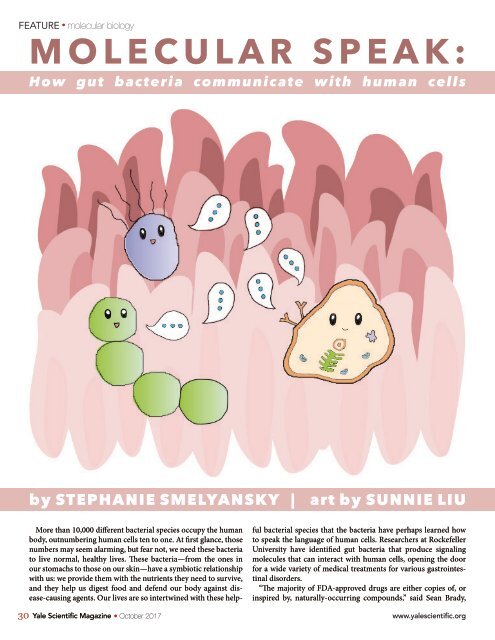YSM Issue 90.4
Create successful ePaper yourself
Turn your PDF publications into a flip-book with our unique Google optimized e-Paper software.
FEATURE<br />
molecular biology<br />
MOLECULAR SPEAK:<br />
How gut bacteria communicate with human cells<br />
by STEPHANIE SMELYANSKY |<br />
art by SUNNIE LIU<br />
More than 10,000 different bacterial species occupy the human<br />
body, outnumbering human cells ten to one. At first glance, those<br />
numbers may seem alarming, but fear not, we need these bacteria<br />
to live normal, healthy lives. These bacteria—from the ones in<br />
our stomachs to those on our skin—have a symbiotic relationship<br />
with us: we provide them with the nutrients they need to survive,<br />
and they help us digest food and defend our body against disease-causing<br />
agents. Our lives are so intertwined with these helpful<br />
bacterial species that the bacteria have perhaps learned how<br />
to speak the language of human cells. Researchers at Rockefeller<br />
University have identified gut bacteria that produce signaling<br />
molecules that can interact with human cells, opening the door<br />
for a wide variety of medical treatments for various gastrointestinal<br />
disorders.<br />
“The majority of FDA-approved drugs are either copies of, or<br />
inspired by, naturally-occurring compounds,” said Sean Brady,<br />
30 Yale Scientific Magazine October 2017 www.yalescientific.org


















